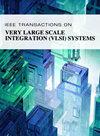A Novel Parallel Feed-Forward Current Ripple Rejection (PFFCRR) Technique for High Load Current High PSRR nMOS LDOs
IF 2.8
2区 工程技术
Q2 COMPUTER SCIENCE, HARDWARE & ARCHITECTURE
IEEE Transactions on Very Large Scale Integration (VLSI) Systems
Pub Date : 2024-11-27
DOI:10.1109/TVLSI.2024.3497803
引用次数: 0
Abstract
There is a significant demand in systems-on-chip (SoCs) for a high-power efficiency low-dropout regulator (LDO) that provides lower dropout voltage, higher load current, and low quiescent current. A high-power supply rejection ratio (PSRR) at the mid-to-high frequency band (0.1–10 MHz) is crucial for LDO to generate low-noise power supplies when driven by switching power converters. However, this presents a significant challenge to enhancing the PSRR since the pass field-effect transistor (FET) operates in the deep triode region at high-current and dropout conditions. In this article, a parallel feed-forward current ripple rejection (PFFCRR) technique is proposed to improve the PSRR performance regardless of the operation region of the nMOS pass FET. The proposed approach senses the supply-induced current ripple and cancels the original ripple through a current path that runs parallel to the nMOS pass FET. The proposed LDO is fabricated in a 180-nm BCD process. The proposed LDO achieves a PSRR better than −35 dB up to 10 MHz at 300-mV dropout voltage with 0.5-A load current and a load capacitor of一种适用于高负载电流、高PSRR nMOS ldo的新型并联前馈电流纹波抑制技术
在片上系统(soc)中,对提供更低的压差、更高的负载电流和更低的静态电流的高功率效率低压差稳压器(LDO)的需求很大。在开关电源变换器驱动下,中高频段(0.1-10 MHz)的高电源抑制比(PSRR)对于LDO产生低噪声电源至关重要。然而,这对提高PSRR提出了重大挑战,因为通场效应晶体管(FET)在大电流和漏出条件下工作在深三极管区域。本文提出了一种并联前馈电流纹波抑制(PFFCRR)技术,以提高nMOS通管场效应管的PFFCRR性能。该方法通过与nMOS通型场效应管平行的电流路径检测电源感应的电流纹波,并消除原始纹波。所提出的LDO是在180纳米的BCD工艺中制备的。所提出的LDO在300 mv压降电压下,在0.5 a负载电流下,在10 MHz范围内实现了优于−35 dB的PSRR $2.2~\mu $ F.当通场效应管工作在深三极管区域时,PFFCRR方法在1 MHz、100 mv压降电压和2.15 a负载电流下实现了18 dB的PSRR改进。此外,LDO的过调量和过调量分别为40.54 mV和36.45 mV,提高了暂态性能 $\Delta {I}_{\text {LOAD}}$ 转换速率为1 A/ $\mu $ 5 .答案:
本文章由计算机程序翻译,如有差异,请以英文原文为准。
求助全文
约1分钟内获得全文
求助全文
来源期刊
CiteScore
6.40
自引率
7.10%
发文量
187
审稿时长
3.6 months
期刊介绍:
The IEEE Transactions on VLSI Systems is published as a monthly journal under the co-sponsorship of the IEEE Circuits and Systems Society, the IEEE Computer Society, and the IEEE Solid-State Circuits Society.
Design and realization of microelectronic systems using VLSI/ULSI technologies require close collaboration among scientists and engineers in the fields of systems architecture, logic and circuit design, chips and wafer fabrication, packaging, testing and systems applications. Generation of specifications, design and verification must be performed at all abstraction levels, including the system, register-transfer, logic, circuit, transistor and process levels.
To address this critical area through a common forum, the IEEE Transactions on VLSI Systems have been founded. The editorial board, consisting of international experts, invites original papers which emphasize and merit the novel systems integration aspects of microelectronic systems including interactions among systems design and partitioning, logic and memory design, digital and analog circuit design, layout synthesis, CAD tools, chips and wafer fabrication, testing and packaging, and systems level qualification. Thus, the coverage of these Transactions will focus on VLSI/ULSI microelectronic systems integration.

 求助内容:
求助内容: 应助结果提醒方式:
应助结果提醒方式:


